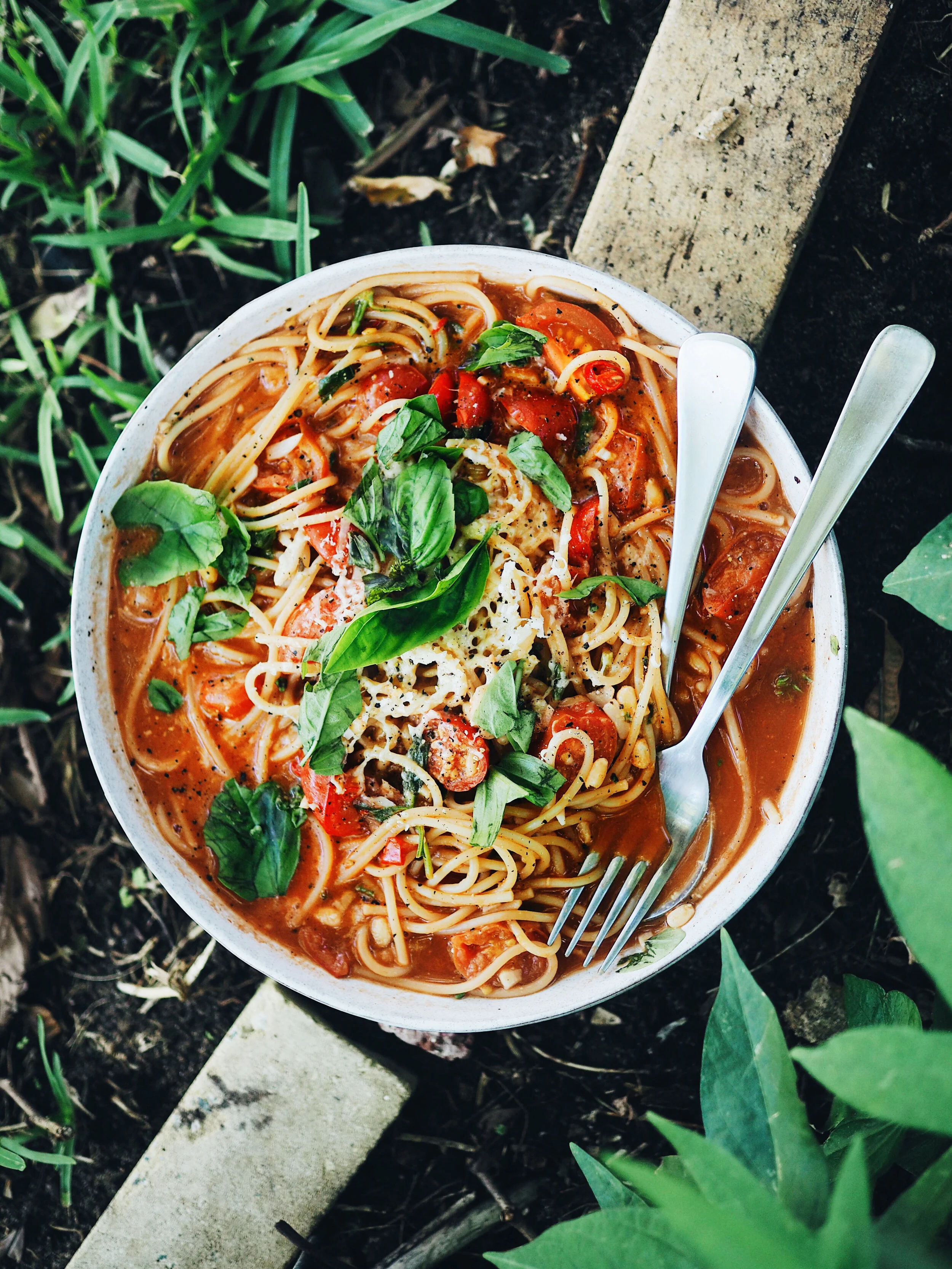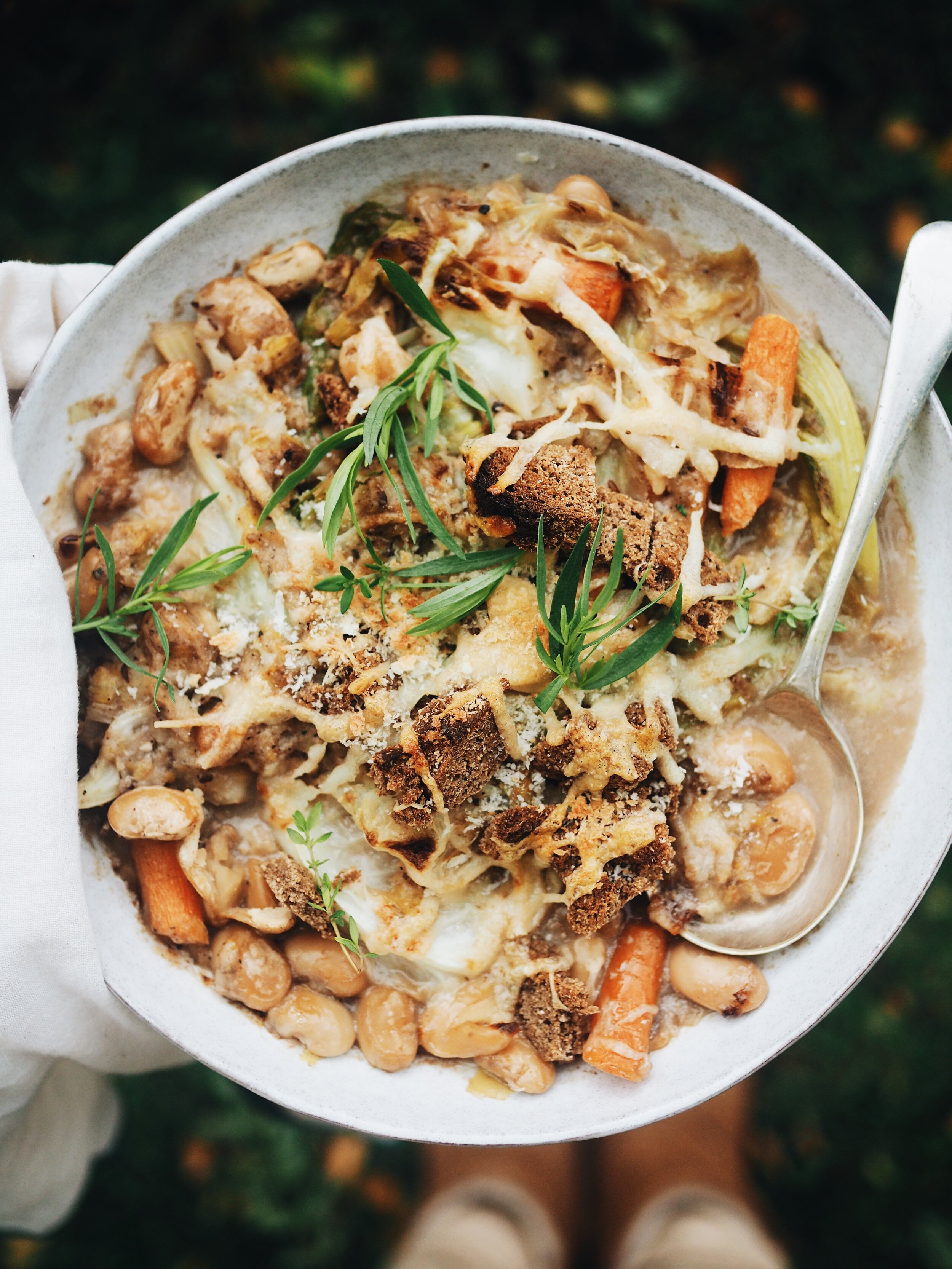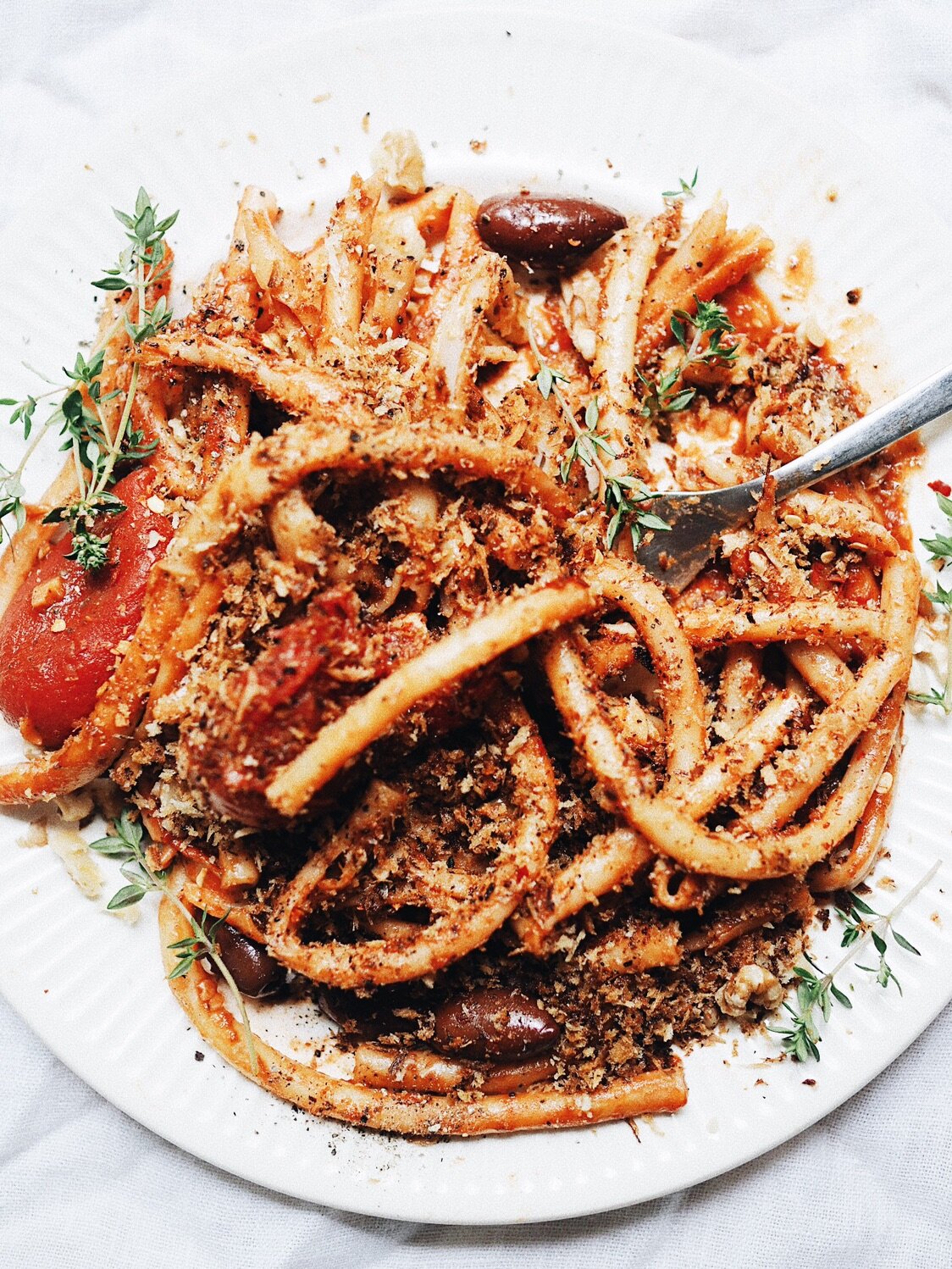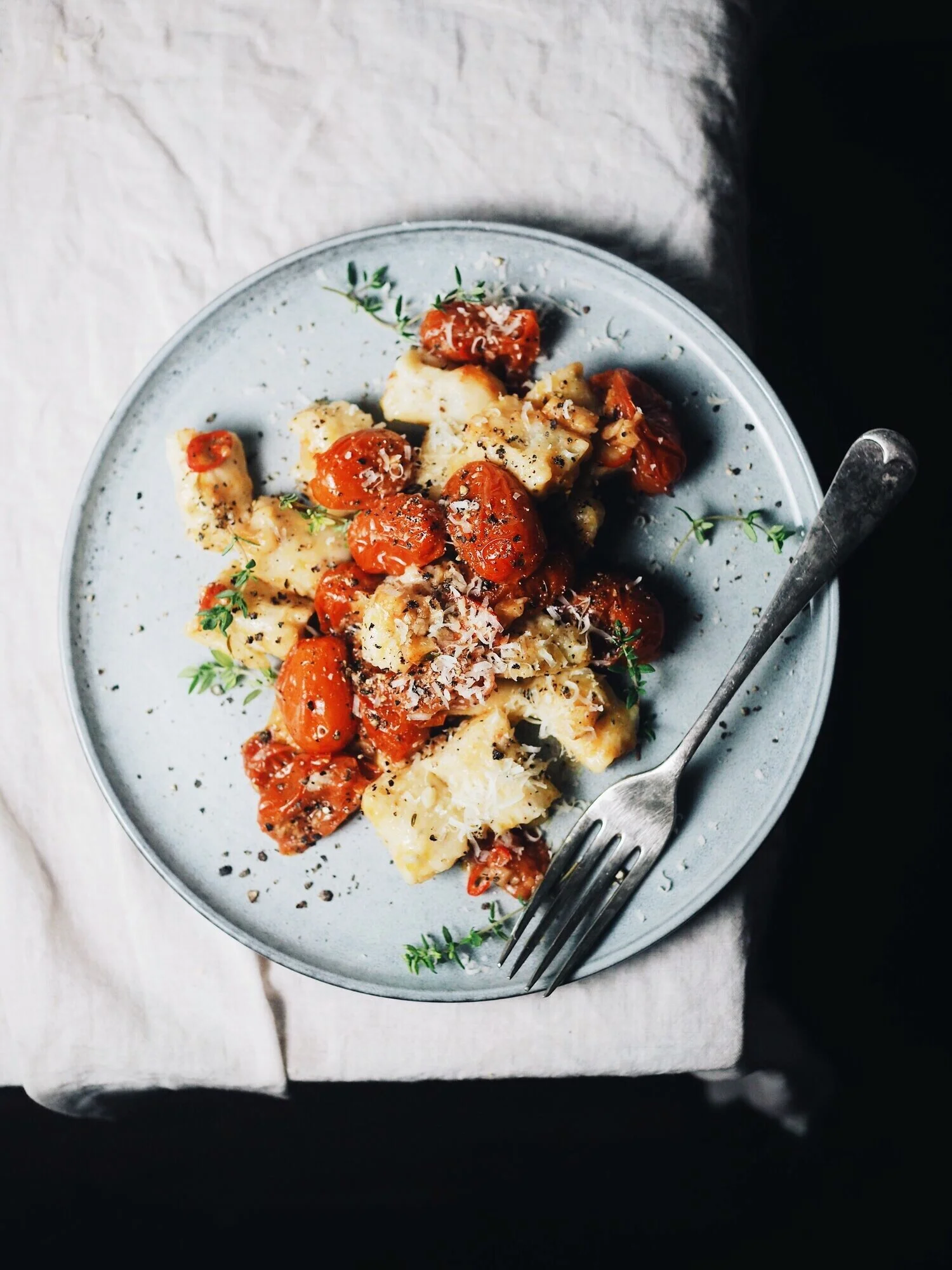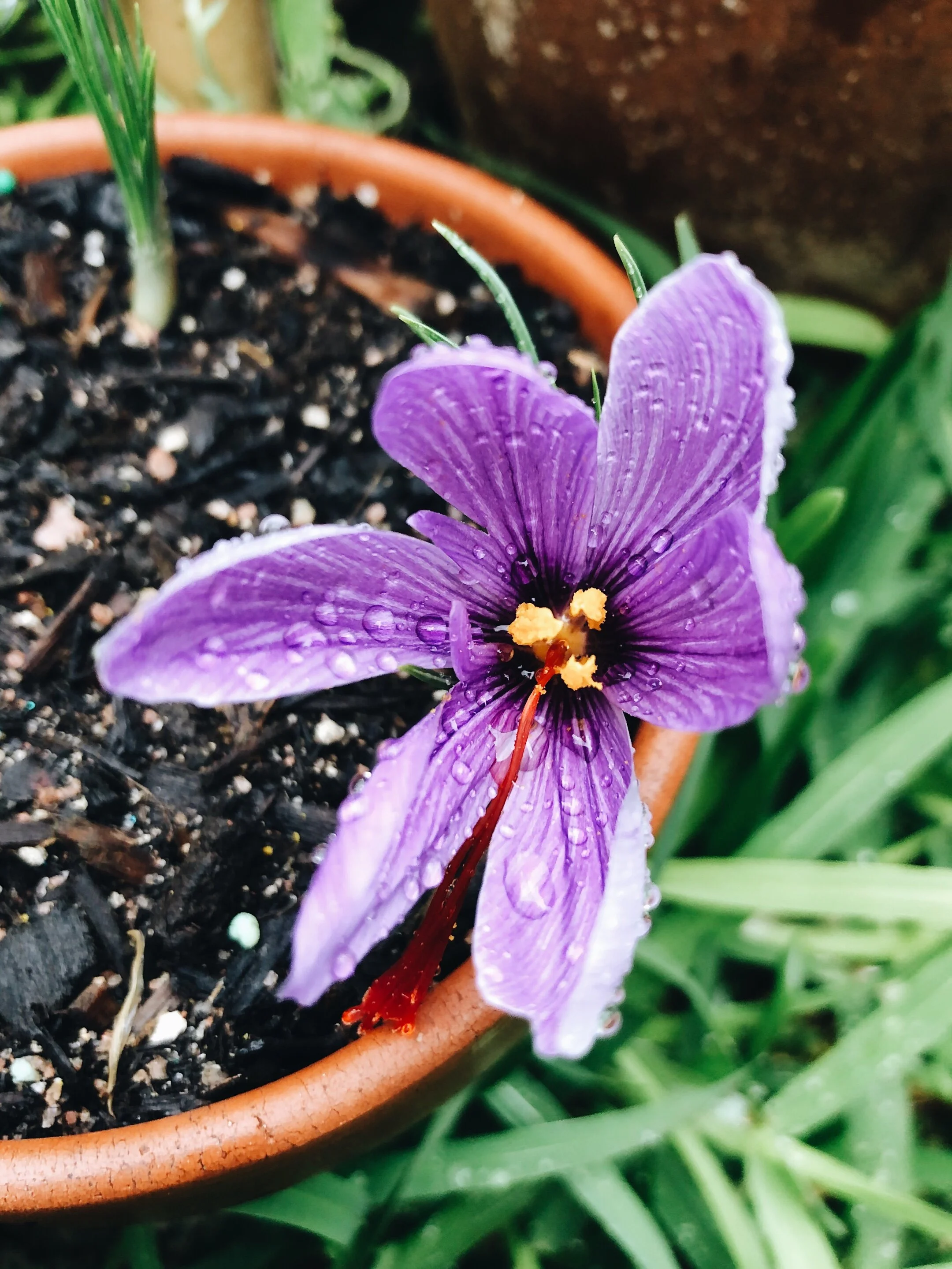Five Overlooked Ingredients for your Pasta Sauces
Tomato pasta. Spaghetti Napoli. Also known as the one thing I will almost always manage to cook when I can’t be bothered cooking. I used to think I shouldn’t admit that sometimes I just don’t want to cook. I thought it might tarnish the ‘I write cookbooks!! YAY!’ business persona I was cultivating. Then I read that Alison Roman (New York cookbook writer extraordinaire who somehow always has pretty nail polish) sometimes eats nothing but haribo gummy bears and popcorn with nutritional yeast for dinner and I felt instantly validated and reassured.
Let’s face it, there will be points in every lifetime where the idea of standing at the stove cooking yet. another. meal. will just seem like vastly more effort than it’s worth. You’ll dip a carrot into a tub of peanut butter. You’ll eat chickpeas straight from the can or suddenly decide that the months old granola in the fridge will taste perfect doused in milk and eaten out of a teacup in the bath.
This blog post isn’t for those times.
This blog post is for the times that are approximately two levels above that. You’ve had a good sleep, you’re not quite at the ‘I’m going to confit garlic and slow roast an Ottolenghi cauliflower’ level, but you’re prepared, at least, to make spaghetti.
Well wait just one doggone minute! If you’re already at the spaghetti level you should definitely consider adding one of these regularly overlooked, often forgotten ingredients that will take your pasta to an Ottolenghi-adjacent level without actually requiring any more effort or conviction on your part. If you’re tired of ‘easy weeknight dinners’ tasting identical but don’t have the energy to try something entirely new, these five ingredients are the perfect way to dip your toes in the ocean of flavour, while still getting a dish from saucepan to table in pretty much the same amount of time.
I should know - these flavour hacks feature in our 2020-21 evenings about as often as my track pants, socks-in-birkenstocks and fluffy pink dressing gown. Unlike my ‘loungewear’, however, the suggestions that follow are actually good, tasteful and free from coffee stains.
Ready? Here we go!
Caraway seeds
Credit for this one actually does go to the aforementioned Yotam Ottolenghi who makes a kickass tomato pasta sauce with caraway seeds and Anchos Chillies (which you can get here). Since trying his recipe I have regularly started adding caraway seeds to my tomato pasta sauces - it gives the sauce a really lovely extra dimension of flavour.
Caraway seeds come from the same family of plants as fennel, but unlike fennel seeds caraway seeds have a less aniseed-y flavour. They’re almost citrusy. I am chewing on them right this minute to try to describe the flavour for you, but it’s really unlike any other spice. Basically, it’s great and you should totally chew on some too so you can experience the greatness before you start throwing it into everything.
The first time I remember having caraway seeds was in a loaf of rye bread so they’ll forever remind me of Nordic cuisine - rye and caraway are a traditional Nordic pairing; the seeds are thrown into rye bread before it’s cooked and fresh slices are served topped with salmon, cream cheese and dill (incidentally, you should ABSOLUTELY get into Nordic flavours; dill, cardamom, rye, salmon, allspice, pepper, nutmeg - so hearty and spicy and delicious!).
Next time you’re making a tomato pasta sauce, add 1 tsp of caraway seeds to the sauce as it bubbles. Let it cook down for a good 20 minutes or more so the spice has time to infuse its flavours into the sauce.
A hearty stew filled with Nordic spices and rye bread from my Winter cookbook, available for purchase here
Smoky Paprika
This is a sneaky, genius trick for the vegans and vegetarians out there. Especially the vegans and vegetarians who USED to eat meat and so potentially remember the gloriousness that is penne all'Amatriciana (basically penne, tomato sauce and smoky bacon).
The good news is if you have smoky paprika you don’t even need the bacon at all! Just dice an onion, fry it in a generous amount of oil (if you’re vegan) or clarified butter (if you’re not) and, as it starts to cook down and turn translucent, add a generous amount of smoky paprika (at least 1 tsp).
Then you can add tomatoes, salt, pepper, maybe a pinch of sugar and let the whole thing simmer down into a thick tomato sauce. Taste it. Add some more smoky paprika!! That shit is goooooood! Voila! Smoky pasta sauce without a hint of bacon! It’s one of my favourites.
Another addition you have to try - stale bread crumbs fried in olive oil, lemon juice and garlic!
Lemon peel
Luke gets credit for this one. Lemon peel in tomato pasta! Whoda thunk it! Luke chucks big whole slices of lemon peel into his tomato sauces and now I am a total lemon peel convert. I like using Meyer lemons best as they tend to have more sweetness and a less bitter peel.
If your tomato sauce doesn’t have enough bite, you can either add citrus, balsamic vinegar or a splash of red/white wine. All of these additions help to bring a bit of bite and a tangy note to the sauces. The lemon peel also adds a citrusy fragrance to the sauce from the oils that are released as the peel warms.
We never even bother to fish the peel out of our sauce before serving, it’s kind of nice to bite into mid-meal, although you can also eat around them if you’re not quite as fanatical about citrus as we are.
Next time you make a tomato pasta sauce try adding the peel from one lemon to the sauce as it cooks!
Saffron
Saffron is the coolest thing. Saffron, to me, was like truffle oil. It takes a while to actually work out what element of flavour it’s adding to the dish, but once you’ve identified it you can never un-taste it.
While we’re on the subject, did you know you can absolutely grow your own saffron in Perth?? And probably in a whole heap of places. The saffron plant is a type of bulb - a crocus. In mid-winter it bursts up from the soil with a heap of strappy leaves, followed by a ridiculously beautiful purple flower that sits close to the ground and has three raging red-orange stigma protruding from its centre. Those are the saffron threads, and you only get 3 per flower. And to this day saffron threads are still picked by hand, which is why they’re so expensive.
Saffron adds a really interesting flavour to tomato sauces. Once again I find myself lost for words, so really the only thing I can tell you is that you have to give it a try. Saffron pairs well with seafood, so if you are a fish-eater you can try it with a prawn and cherry tomato pasta. If you aren’t a fish eater - good news! It also goes beautifully with a cherry tomato pasta, heaps of garlic and some roasted almonds sprinkled on top before serving.
To make either version, chuck a VERY generous glug of olive oil (or grapeseed oil) into a heavy bottomed frying pan and add a whole lot of cherry tomatoes. And a sh*ttonne of finely diced garlic. We’re talking 5 cloves at least, probably 10. Let it cook on low for a while while you get your saffron ready.
Boil some water and put 2 Tbsp in a cup. Add your saffron threads and let them steep for 10 minutes - the water should turn a nice bright orange and should be fragrant - have a sniff, that’s what saffron smells like! It’s weird. I like it.
The amount of saffron you decide to use really just depends on what you can justify spending your money on. Sometimes I’ve been restrained and just used a pinch, other times I’ve used the entire packet (they tend to come in teeny little plastic boxes which are very cute, just the sort of thing my niece would turn into a some fancy piece of furniture in one of her dolls’ houses). They make you feel like a giant human when you hold them. They are also reasonably fiddly to open and the risk of tipping the entire thing on the floor is ever-present, so open them carefully! You drop that pricey saffron you will be picking every individual thread up off the floor on bended knee and eating it anyway!
So now you’ve got your saffron-infused water, tip the whole thing (threads and water) into your cherry tomatoes, which should by now be starting to collapse and form a delicious, umami-rich sauce. Did you know that tomatoes contain MSG? MSG is a naturally occurring salt that you can find in tomatoes, aged parmesan cheese, fermented sauces (like soy) and pastes (like miso) as well as in meats and seafood. That’s what gives them the umami flavour.
Anyhoo, let your tomatoes collapse a bit, but not entirely. Don’t forget to cook your pasta while this is all going on! Then you can add some prawns and let them cook through, or you can start roasting some almonds OR you could tip some pouring cream into the pasta and watch everything get even more indulgently delicious.
Serve it with fresh parsley or basil and if you’ve roasted almonds throw them (roughly chopped) on top of the whole thing. Add some sharp parmesan or pecorino cheese for extra umami goodness.
Other recommended extras - olives, chilli, walnuts and sprigs of fresh thyme
Ouzo
We’ve heard of creamy vodka pasta and yes, I know it is great, but have you heard of ouzo pasta? Because that stuff is magical! Ouzo gets a bad rap ‘round these here parts. I think if we actually went to Greece and tried their traditional stuff we’d all be converts. Fortunately I happen to live with a man whose favourite hobby is to throw aromatics wildly into spirits and see what comes out, and a few months ago out came some Ouzo!
I added Luke’s ouzo to a creamy tomato pasta sauce and it was gooood. Ouzo has a very aniseed-y flavour (it has a base of fennel seeds and anise) which acts a little like caraway seeds in a tomato sauce. The aniseed flavour is strong to begin with, but as the ouzo cooks down it gives the tomatoes an almost sweet and very interesting depth of flavour.
You don’t need to make your own ouzo for this by the way! Shop bought will be perfectly excellent and I have a recipe here, which you can follow if you’d like to give it a go. Although it’s not included in that recipe I strongly recommend crumbling some feta onto the pasta once it’s done - the sharp saltiness of the feta will go so well with the sweet, spiciness of the tomato sauce.
And there you have it! Five oft overlooked ingredients that are GUARANTEED to take your tomato pasta sauces up a notch. The thing about cooking is that at any given point there are usually only a few tiny changes you need to make to a recipe to turn it from something everyday into something that tastes really interesting and special. It doesn’t actually take any additional skill or effort, just a few clever hacks and a bit of experimentation. Try adding one of these five ingredients next time you make a tomato pasta sauce, and lemme know how it goes!
If your friends ask what you did to make it taste so fantastic tell them it’s highly complicated and they probably wouldn’t understand. Then subtly suggest they buy one of my cookbooks ;)

